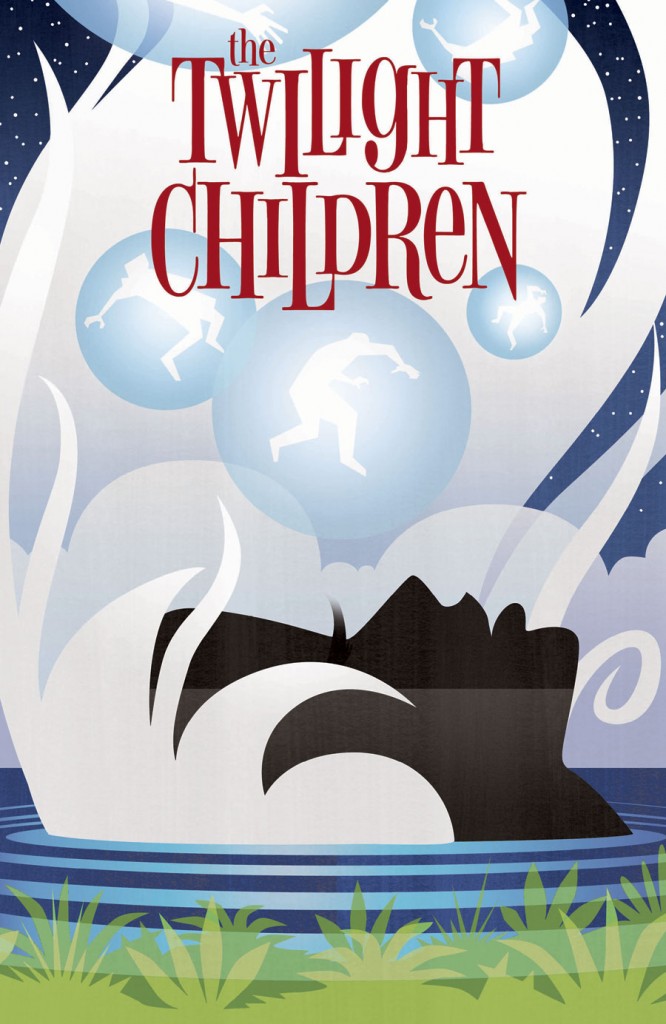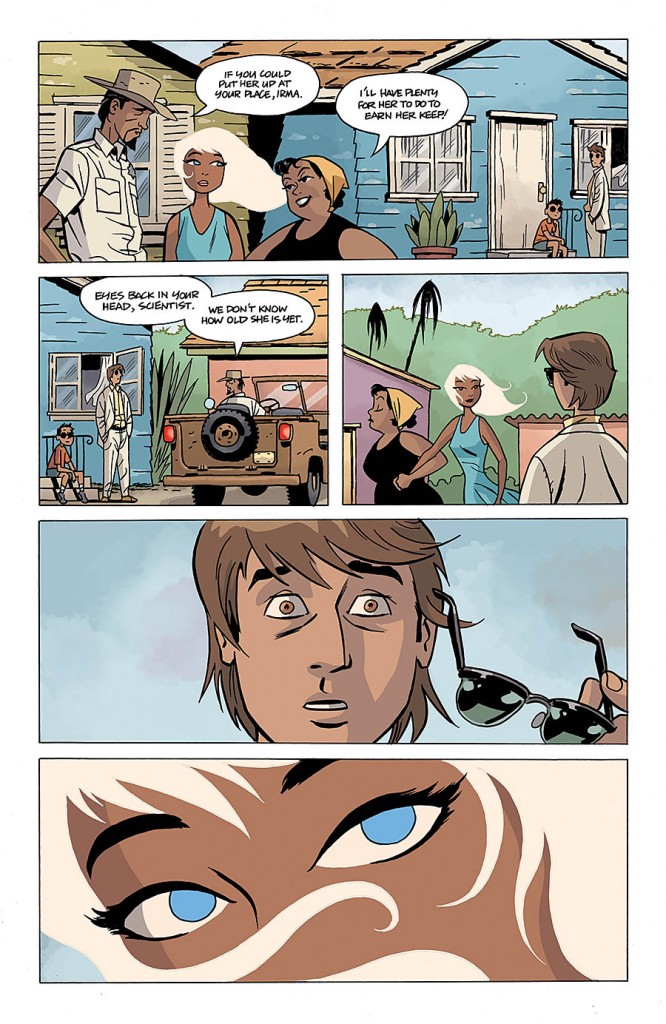 By Jarrod Jones. It’s hard to be sure, but I’m almost certain that Gilbert Hernandez and Darwyn Cooke are telepathically linked. What other conclusion is there to possibly reach? Cooke’s sleek, minimalistic panel work functions in perfect collusion to Hernandez’s script, so well in fact that I can almost see how it’s done right in front of me.
By Jarrod Jones. It’s hard to be sure, but I’m almost certain that Gilbert Hernandez and Darwyn Cooke are telepathically linked. What other conclusion is there to possibly reach? Cooke’s sleek, minimalistic panel work functions in perfect collusion to Hernandez’s script, so well in fact that I can almost see how it’s done right in front of me.
I see them now, seated at their respective desks working out the latest issue of Twilight Children, their eyes as pupiless and phosphorescent as the young urchins who stroll wistfully through the dusty streets contained within Vertigo’s latest. Everything that would make this level of creativity possible, it all happens at once — quickly, seamlessly, and without incident. Then their eyes reform, they look upon their works, and call it a day. One probably phones the other just to make sure the process doesn’t interrupt family dinner.
That may sound nuts, but after reading through the second issue of Twilight Children, I’m convinced that if telepathy isn’t the culprit to this perfect alchemy, then it’s certainly kismet. That’s right. That makes far more sense: The Twilight Children is comic book serendipity.
As anyone who’s been a longtime reader of Gilbert Hernandez’s “Palomar” series already knows, the man knows how to craft entire worlds within the confines of a thirty-page comic. He populates his spaces with colorful characters with a wide spectrum of tremulous emotion, caustic wit, and peculiar inclination. Every single person the artist creates is a fully-realized person, living in perfect harmony with the world around them. And yet, in every single story ever written by Hernandez, it’s not that individual who brings about the intrigue; in Hernandez’s mind, it takes a village.

And as anyone who’s read Darwyn Cooke’s adaptation of Richard Stark’s “Parker” series already knows, the man knows how to deftly create a world of foreboding, wonder, and danger. Coupled with his sterling body of work in the realm of superheroes, Cooke also has a daunting knack of rendering the unexplainable, imbuing mystery into every single panel while giving every entity contained within it an indescribable poise. When one reads a work from Darwyn Cooke, one begins to feel that comics just might be the most dignified form of popular art.
Once joined, Hernandez & Cooke put together a comic book that works in tandem with each creator’s individual strengths. When I’m reading Twilight Children, it’s easy to imagine their stations reversed, with Cooke scripting some strange jet-setting adventure while Hernandez supplies the same amount of deliberate linework and nuance he would provide his own work. And with this high-wire act of creative synergy at play, the whole thing could topple — but it could never really fall — without the talents of one of the industry’s finest colorists. With Dave Stewart, the provocative enigma surrounding Twilight Children is made all the more captivating, giving Vertigo’s best miniseries in recent memory a cinematic heft. Hernandez, Cooke, and Stewart ought to be able to make whatever comics they want together, for forever and ever.
For right now, all we can do is let The Twilight Children wrap itself around our cerebral cortex, mesmerizing us with its mystery, and laying us flat with its perfection.
Vertigo/$4.99
Written by Gilbert Hernandez.
Art by Darwyn Cooke.
Colors by Dave Stewart.
10 out of 10













